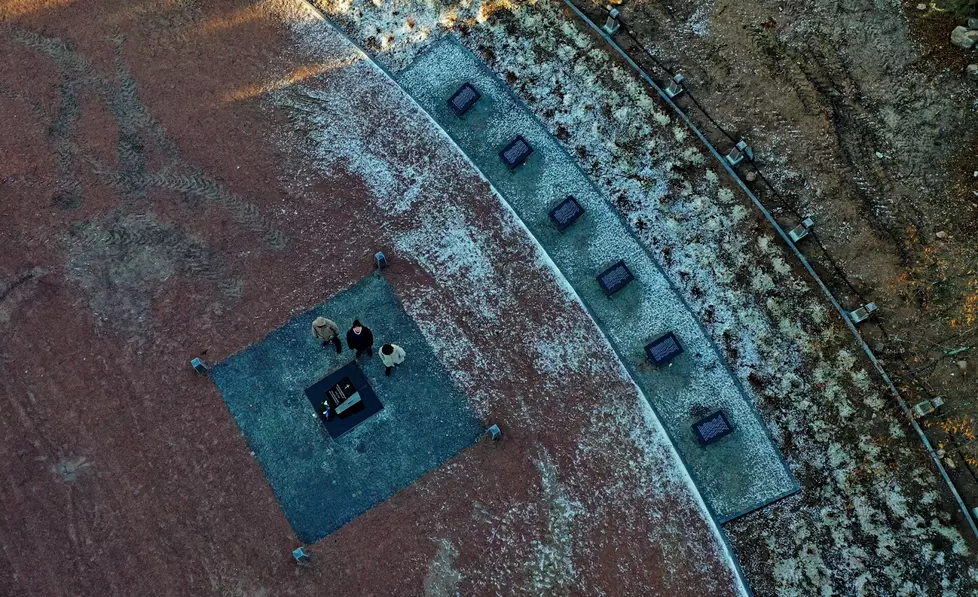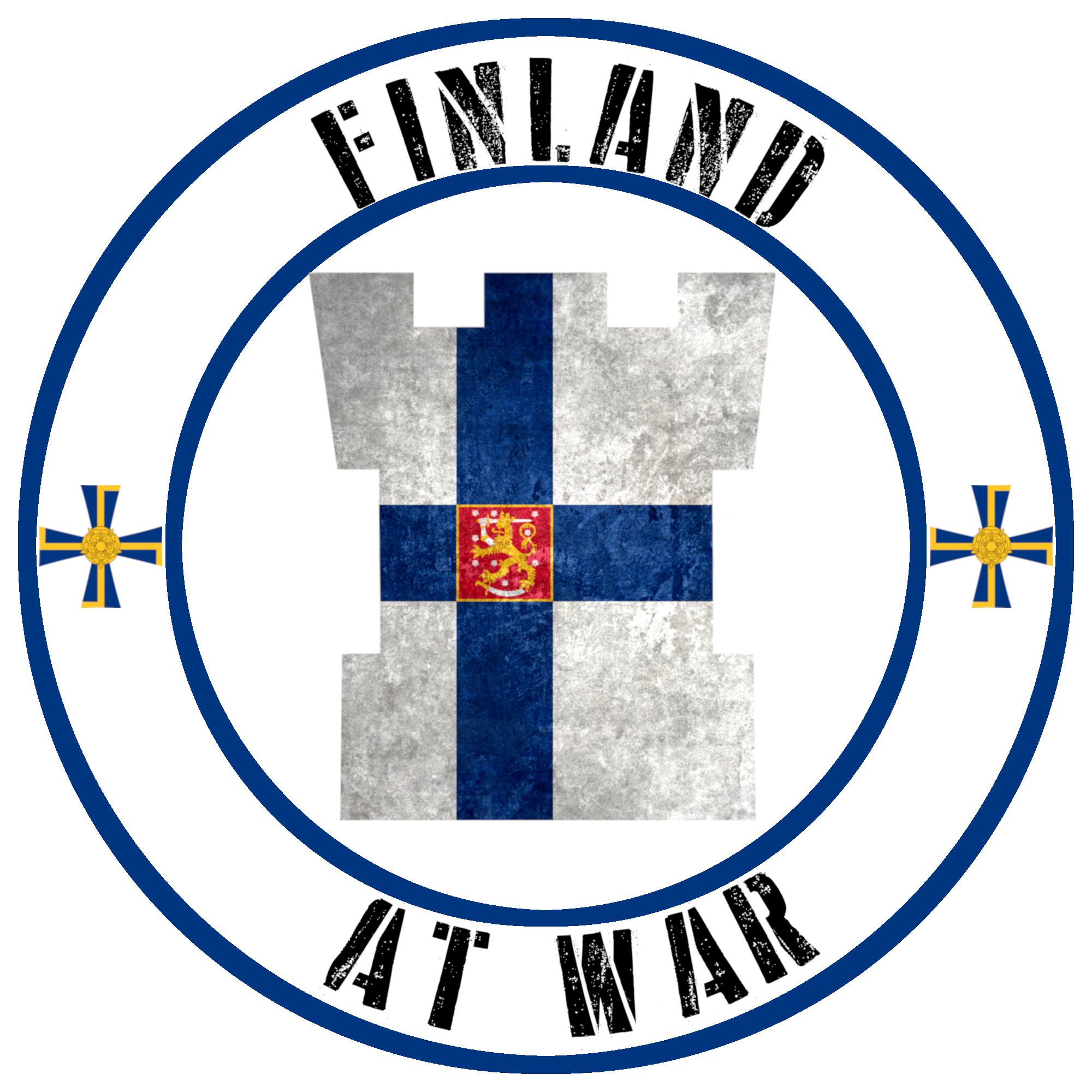War graves have always played an important role in modern society. They are places of remembrance and sacrifice. Where families can come together to share grief over the loss of their loved ones, and where Veterans can pay respect to their comrades who didn’t survive. They are sacred places that are a reflection of the society they are part of. They are also places of sensitivity, where a slight can be easily perceived or consternation quickly unfolds.
Despite past and current tensions regarding Russia, Finland and Russia have always maintained a relatively cordial relationship in regard to War Graves and Memorials. This is why it came as a surprise to many when Iltasanomat published an article on the 23rd March 2022 about the removal of the Finnish Heroes Cemetary at the former Kovisto (now Primorsk) parish church.

Kovisto Parish Church Heroes’ Cemetery
In the early days of the Winter War, instructions were given from Mannerheim’s Headquarters on the retrieval and burial of those who fell during the conflict. These instructions were unique in comparison to other nations’ burial procedures, as it stressed the importance of returning the fallen to their home parishes. While this created a considerable logistical workload on an already overburdened system, it was deemed appropriate to honour those who sacrificed themselves. Even to this day, when the unknown remains of a soldier are identified, they are reinterned in their own community’s cemetery.
Gunner Aarre Matti Joutsimie became the first to be interned at Koivisto, having been killed during an attack on the Saarenpää fortress on the 10th December 1939. Sadly, he would not remain alone and by 1944, some 300 others would be buried in the Churchyard. As the Moscow Armistice came into effect and Kovisto became part of the Soviet Union, the Heroes’ Cemetery fell into disrepair and would essentially disappear.
After the collapse of the Soviet Union and it became easier for people to cross the border, trips were made to ascertain the state of the numerous Heroes’ Cemeteries in the former Finnish areas. While the Church still stood, the cemetery was no longer visible and soon a project was started for some type of memorial to be erected. Working alongside local authorities, artist Aila Salo, created a “Cross and Sail” monument that was unveiled in 1992 on the site of the former cemetery.

Restoration Project
In 2015 Juhani Pekkola and Eija Tuominen visited the Church and noted that while the memorial was in adequate condition, the area surrounding it was not. Contacting the Finnish Ministry of Defence, they suggested that it take the measures required to rehabilitate Koivisto’s hero’s grave. To support their case, they pointed to the 1992 treaty between Finland and Russia regarding the maintenance of military cemeteries on their territory. The reply was supportive but noted a lack of funds to pursue the case itself. The MoD though did state that the cemetery might fall under the purview of local parish activities.
At the 2016 annual meeting of the Koivisto Society, Eija Tuominen presented the idea for a renovation project. The meeting agreed on the project and soon a working group under Tuominen was organised. A multi-staged detailed approach was taken, this included several consultations with the Vyborg County District Administration and the City of Primorsk authorities. According to the koivistolaiset.net website on the project, the meetings were positive and by November 2016 planning was already taking place. Throughout 2017 meetings took place, plans were presented, and changes were made, but everything appeared to be moving forward smoothly. It wouldn’t be until November 2018 though that the memorial would start to be placed in the churchyard. Though, as with all projects of this manner, problems did crop up. The following month saw the Leningrad International Committee protest the wording on the memorial statue, that those buried could not be referred to as heroes. Unfortunately, this meant the text of the monument had to be sanded off and reformatted.

Finally, as December 2019 came to a close, the project was almost completed, with fence posts and chains installed. It was agreed that the finishing would take place in the spring of 2020.
Vandalism


The vandalism that occurred in Feburary 2020. Source: Iltasanomat/City of Primorsk
In late February 2020, Eija Tuominen received a call from local authorities of Primorsk to inform him that the memorial had been vandalised. The main stone had red stars spray-painted on the side and red paint poured over it; several of the surrounding slabs with the names of the fallen had been covered with the same red paint. While an obviously infuriating incident, the local authorities were quick to rectify the situation and within a couple of days the memorial was cleaned up.

The incident had occurred sometime during the Defender of the Fatherland Day, which had the added significance of being the year of the 75th anniversary of the defeat of Nazi Germany. In recent years there has been an increasing rise in opposition to celebrating so-called “Finnish Fascists”, with numerous false claims being pushed online, including that the Kovisto Cemetery was actually the burial place for German soldiers. Even with assurances from the Primorsk authorities that the incident will be investigated, the situation is still one of profound sorrow.
Removal of the Memorial
Over the weekend of the 18th-20th March 2022, the memorial stones at the Kovisto Cemetery were removed, except for the central stone which had been covered with a black substance. Finnish tabloid Iltasanomat reported the incident on the 23rd, quoting Irina Kolotova, director of the Primorsk Local History Museum, as saying “When we left work on Friday, everything was in place, but there were only traces left on Saturday.” Eija Tuominen, Chairman of the Koivisto Society, was unaware of the incident until reading about it in the tabloid. He was interviewed later, “This can not be true. We have not received any official or unofficial information about this, this has happened in secret from us.”

IS has been attempting to gather more information regarding the incident but despite giving the Primorsk city administration the questions in writing as requested, no reply has been received. IS continues by stating that several sources have informed them that the memorial had been specifically targeted by the Russian security services. This wouldn’t be unsurprising with the recent rise in ‘Russophobia’ and ‘De-nazifying’, which has also seen a reappraisal of the military history between Finland and the Soviet Union.
Sadly though, this isn’t the only Finnish war memorial to be vandalised in Russia. In 2016 a plaque to Mannerheim was unveiled in St.Petersburg, by the end of the year it had been subjected to several red paint attacks, as well as a handful of protests. In October 2017 a memorial at Kuuterselkä was painted with red swastikas.


The Kuuterselkä memorial after its vandalism in October 2017. Source: Iltasanomat
Hypocrisy
Despite several positive and comforting comments from several people within Primorsk, the general consensus boils down to picturing the Finns as Fascists and any monument connected to them as just a glorification of fascism. As Tuominen commented to IS, “This veteran was present at the event [regarding a local public information session held in the summer of 2019]. He was so positive and happy that we put the places in order. It reflected his life experience and maturity. But then there are also those in the big country who do not know the history and consider the Finns fascists. All kinds of false information circulates.”

While attacks have occurred against Finnish monuments and been met either with silence or justification, when the opposite happens, we see a completely different reaction. For example, in April 2007 riots broke out in Estonia in response to the relocation of the Soviet World War II war memorial in Tallinn, known more commonly as the Bronze Soldier. These riots involved over a thousand people from both the Estonian and Russian speaking populations, and saw some over 170 injured and 1 death. The political fallout from this stressed relations between Estonia and Russia. While I cannot find any examples in Finland, there has been an increase in vandalism against Soviet memorials across Europe, with the reaction from Russia being very vocal. These include demands of investigations, justice and security.
However, I think the best example of the Russian hypocritical mindset comes from Putin after the Bronze Soldier incident; “Those who try to belittle that priceless experience and desecrate monuments to war heroes today insult their own nations as well and sow discord and new mistrust between countries and peoples”.
Sources
Iltasanomat: The Finnish hero cemetery in Koivisto was the target of a Russian “Nazi hunt”
Iltasanomat: Promising turn in Koivisto: Memorial stones smeared with Finnish grave paint almost completely cleaned
Iltasanomat: The monument to the Finns on the Isthmus was crushed with swastikas and red paint
Iltamsanomat: The removal of the nameplates of the heroes’ graves in Russia shocked the Finnish Koivisto Society: “Everything happened in secret from us”
History of the Koivisto Heroes’ Cemetery
Petrig, Anna. The war dead and their gravesites (International Review of the Red Cross, Volume 91 Number 874 June 2009)
Yle: Mannerheim memorial raises hackles in Russia
Tass: Russia concerned over acts of vandalism against Soviet memorials in Latvia
Soviet war memorials in Eastern Europe continue to strain relations with Russia
Interfax: Putin criticizes attempts to belittle WWII heroes
AGREEMENT between the Government of the Republic of Finland and the Government of the Russian Federation on co-operation in preserving the memory of Finnish soldiers who fell in Russia as a result of the Second World War and Russian (Soviet) soldiers who fell in Finland
